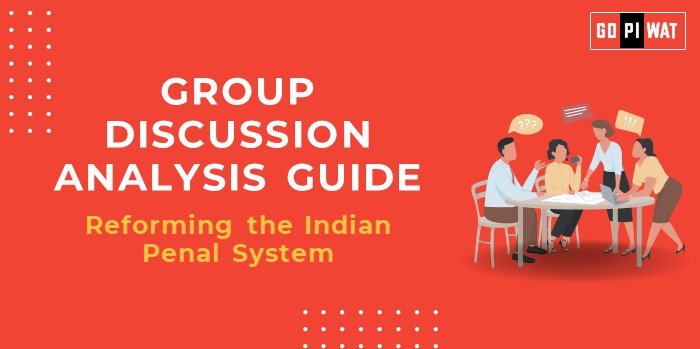📋 Reforming the Indian Penal System: GD Analysis Guide
🌐 Introduction to Reforming the Indian Penal System
- 📜 Opening Context: The Indian Penal System, which underpins the country’s criminal justice framework, has been widely debated for its efficacy, fairness, and modernization. Reforming this system holds significance for ensuring justice, reducing recidivism, and improving rehabilitation.
- 🏛️ Topic Background: Rooted in the colonial-era Indian Penal Code (IPC) of 1860, the system has seen piecemeal reforms over the decades. However, issues like overcrowded prisons, judicial delays, and outdated laws demand holistic re-evaluation.
📊 Quick Facts and Key Statistics
📈 Overcrowding in Prisons: Occupancy at 130% (NCRB, 2022) – Highlights the strain on facilities.
⚖️ Pending Cases: 4.5 crore cases in Indian courts (2023) – Shows judicial backlog.
🔄 Recidivism Rate: 21.4% (NCRB, 2022) – Reflects challenges in rehabilitation.
👩⚖️ Judicial Infrastructure: Only 20 judges per million population – Points to systemic under-resourcing.
👥 Stakeholders and Their Roles
- 🏛️ Government: Enacting policy reforms, enhancing judiciary funding, modernizing penal codes.
- ⚖️ Judiciary: Expediting case resolution, implementing alternative dispute resolutions.
- 📢 Civil Society: Advocating for prisoner rights and systemic reforms.
- 🌍 International Bodies: Sharing best practices and aiding capacity-building initiatives.
🏆 Achievements and Challenges
🌟 Achievements:
- 🏅 Introduction of fast-track courts for certain cases.
- 📂 Efforts toward digitizing case records through e-courts.
- 📜 Progressive laws such as the Juvenile Justice Act.
⚠️ Challenges:
- 🚨 Overburdened judiciary and prisons.
- 🔍 Inadequate focus on rehabilitation and reintegration.
- 📉 Limited use of non-custodial sentences like probation or community service.
🌍 Global Comparisons:
- 🇳🇴 Norway: Focus on rehabilitation has reduced recidivism to below 20%.
- 🇺🇸 USA: Despite significant resources, faces high incarceration rates.
📖 Case Studies:
- 📌 Delhi’s Tihar Jail: Efforts in vocational training but constrained by overcrowding.
📚 Structured Arguments for Discussion
- 💬 Supporting Stance: “Reforming the penal system is essential for reducing judicial backlogs and improving societal reintegration of offenders.”
- 🔄 Opposing Stance: “Incremental changes can achieve goals; systemic overhauls may destabilize current mechanisms.”
- ⚖️ Balanced Perspective: “Reforms should blend modernization of laws and judicial efficiency while ensuring societal readiness for change.”
🗣️ Effective Discussion Approaches
- 📊 Opening Approaches:
- 🔢 Statistical Hook: “India’s prisons operate at 130% capacity, indicating a pressing need for reform.”
- ⚖️ Contrast: “While fast-track courts have expedited justice for many, millions of cases remain unresolved.”
- 🛡️ Counter-Argument Handling: Emphasize global best practices, cite measurable improvements in rehabilitation in Norway or Germany.
🔍 Strategic Analysis of Strengths and Weaknesses
- 💪 Strengths: Large judiciary infrastructure, evolving legal frameworks.
- 🛠️ Weaknesses: Overburdened system, outdated penal codes.
- 🌟 Opportunities: Integration of AI for case management, focus on rehabilitation.
- ⚡ Threats: Rising crime rates, lack of uniform implementation.
🎓 Connecting with B-School Applications
- 🌐 Real-World Applications: Exploring links to leadership in public administration and conflict resolution strategies.
- ❓ Sample Interview Questions:
- 🤔 “How can technology transform the Indian judiciary?”
- 🌍 “Evaluate rehabilitation-focused penal systems globally.”
- 💡 Insights for Students: Emphasize skills in policy formulation and resource allocation.


